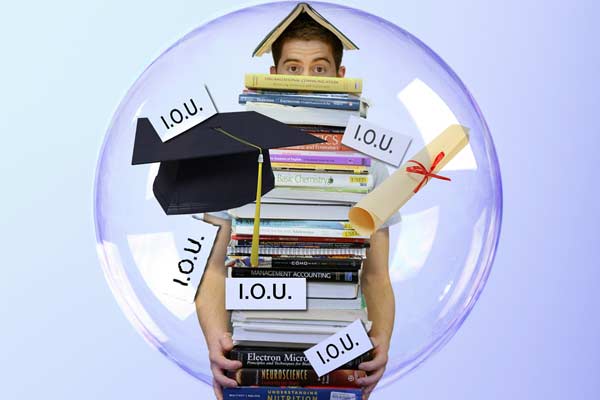Canada GSL: Everything You Need To Know
GSL stands for Canada Government Student Loan. It’s a student loan provided by the federal government under the Canada Revenue Agency (CRA). It’s a sponsorship-like program for post-secondary education.
The program pays the post-secondary school fees for needy students and families with dependents or disabilities. Qualifying students can get several territorial or provincial grants throughout their post-secondary education.
How Are the GSL Loans/Grants Offered?
The grants offered under the GSL umbrella are manifold. They include the grants and loans provided under the national funding program (NFP) and the National Student loan Services Center (NSLSC). The qualification requirements differ based on the jurisdiction.
Therefore, a student with a lesser financial burden in specific Canadian jurisdiction can qualify for the grants/loans while another with heavier financial obligations in another jurisdiction gets disapproved.
What’s the Canada GSL Money?
It’s the tax-free money deposited to a student’s GSL account throughout post-secondary education. It’s separated into two portions: grant and loan. GSL loans should be repaid with interest accrued, while the grant doesn’t need to be repaid.
What Are the Eligibility Requirements for GSL?
GSL’s eligibility requirements depend on the territory and province the applicant is in. In some territories, the eligibility requirements are tougher. In other provinces, the criteria are not quite demanding.
The CRA will often examine your course load and program length to decide who is eligible and who is not.
In provinces such as Prince Edward Island, Alberta, Manitoba, and Nova Scotia, the loans are provided to learners through student funding programs or GSL funds.
In other provinces such as Newfoundland, Ontario, New Brunswick, and British Columbia, students get integrated grants or loans.
For a student to qualify for these loans or grants, they must meet the following criteria:
- They should be taking a qualified education program
- They should be a Canadian citizen or permanent resident
- They must be living in a Canadian territory or province supporting GSL
These are the three basic GSL eligibility requirements. However, every Canadian territory and province have their eligibility criteria indicated on the official website.
You might want to check through the territory or province’s official website to know what’s required of you to get approved for the GSL program.
How Much Can Qualifying Learners Get?
Different GSL beneficiaries receive varying amounts of money from the government kit.
The quantity of GSL deposit you’ll qualify for mostly depends on the following factors:
- The amount of income your family earns annually
- The total number of people making up your family
- The particular territory or province you’re residing in
- Your overall living expenses and the school tuition fee
- Your current health status (disabled people may qualify for a higher amount)
As per the recent updates, qualifying candidates will be granted amounts ranging from $3600 to $6000 for the academic year 2022 to 2023.
The amount you’ll get will also depend on whether you’re enrolled in a part-time or full-time course. To know how much grant or loan you qualify for, get a rough estimate from the federal student aid estimator.
Must You Repay the GSL?
As earlier mentioned, the GSL is offered as a grant and repayable loan. The grant is like a gift given to you by the government. You won’t need to repay it later. The loan is a repayable amount given to you to repay later.
The outstanding feature of the GSL loan is that you won’t be pressured to pay while schooling or immediately after you graduate. Likewise, you won’t be required to repay the loan if you’re a reservist Canadian serving in the Canadian Forces.
However, the government will only give you six months to repay the loan after graduating.
The six-month talks of the time after you’ve done your final school session, left the school, deferred the session, or changed your learning schedules from full-term to part-time.
Like other loans, you’re at liberty to start paying the loan as soon as you start earning an income.
You can begin repaying two weeks or three months after graduating from college. You can cut your interest rates by paying your loan early enough.
Your loan details are contained on the National Student Loan Services Center {NSLSC). The information also provides everything about the predetermined repayment period.
What Happens If You Cannot Repay The GSL Loan?
Not repaying the GSL loan can land you in a problem with financial institutions. It can affect your credit rating and get you locked out from assessing financial aid in the future.
However, if you can’t afford to pay the GSL loan after six months, you can ask for repayment assistance.
You can also ask the monthly payment to be reduced to an amount you can comfortably afford.
If it becomes impossible to repay the student loan, you can consider the options below:
- Alert the NSLSC to get a feasible repayment option
- Seek a viable repayment option from your territory or province
Does the Canadian Government Tax GSL Loans?
The Canadian government gives the GSL under the categories of student aid. They don’t tax the money, meaning as a beneficiary, you won’t find yourself being forced to pay tax fines because you didn’t pay your tax from the GSL loan.
The funds are released from the government’s financial kid, so it won’t make any logical to place it under taxation.
These funds are made to relieve students of the financial burden throughout the post-education learning process.
Financial aid to students has significantly increased the number of students graduating from Canadian universities and colleges every year. Not every willing and qualified student would have earned a diploma or degree in their dream course if there weren’t college grants and loans.
The Canadian Government has done a lot to ensure fitting students can enroll in their dream universities and colleges to study their dream courses.
One way the Canadian government supports quality education is by providing GSL loans to qualifying students.
This student financial aid is divided into a loan and a grant. The grant doesn’t need to be repaid after the learner completes their education sessions, but the loan must be paid.








